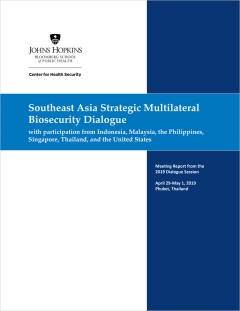On July 26, 2019, researchers, policymakers, and other stakeholders gathered at the St. Regis Hotel in Washington, DC, for a day-long dialogue on safety and security in an era of synthetic biology. The meeting, co-sponsored by the Johns Hopkins Center for Health Security and Tianjin University Centre for Biosafety Research and Strategy, drew more than 100 attendees and featured speakers from China, Europe, and the United States.
The United States and China are at the forefront of research and investment in synthetic biology. As leading countries in this rapidly evolving field, they have a responsibility to work together to promote safety and security. The goal of this meeting was to bring representatives from China and the United States together to develop a mutual understanding of each country’s current governance structures and to begin a dialogue on what is required to promote global safety and security. This report recounts the meeting’s activities and shares several key themes derived from the presentations and conversations of the day.



